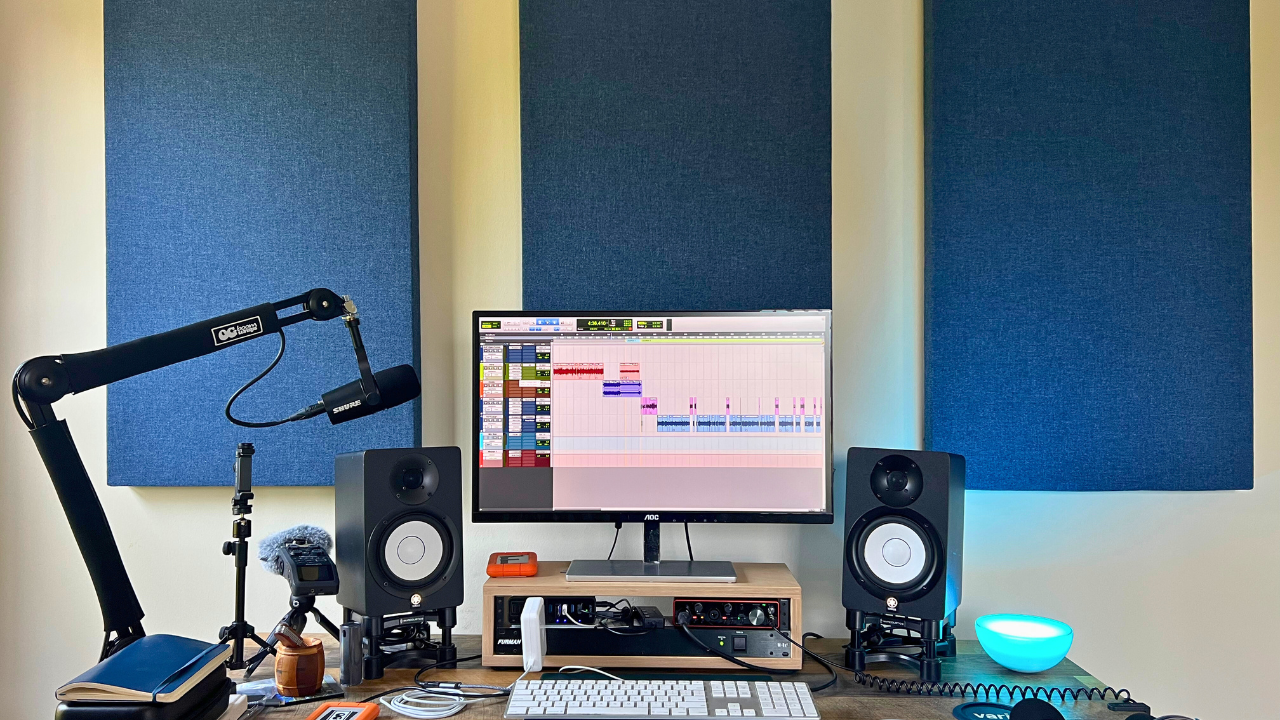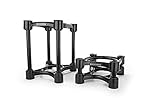
Crafting a high-quality podcast is a labor of love. At The Podcast Haven, we’ve been pouring our hearts into this craft since 2016.
One of the secrets to our editing and mixing success lies in being able to hear the minutia of the audio we work with.
To catch these details, we rely on a good set of monitors, and our go-to choice has always been the Yamaha HS5.
In this article, we’ll be diving into the features of the Yamaha HS5s, their specifications, and why we believe they’re an excellent choice for podcast producers.
This isn’t just a review; it’s a testament to a piece of equipment that has been instrumental in our podcasting journey.
One last thing before we dive in. This post contains Amazon Affiliate links. As Amazon associates we earn from qualifying purchases. This is at no extra cost to you.
Yamaha HS5 Sound Quality
The Yamaha HS5 monitors are all about accuracy. They’re designed to give as authentic to the recorded source as possible, without any coloring or alteration.
This is crucial when mixing because it allows you to make accurate editing and mixing decisions.
Many speaker manufacturers today artificially enhance their monitor’s bass or playback. This can make podcasts sound deceptively good, leading to a disappointing listening experience for the audience when the show doesn’t live up to the hype.
New Transducers
These monitors feature newly developed transducers that provide a smooth response over a wide range of bandwidth.
The tweeter is designed to deliver distortion-free high end up to 30 kHz, while the woofers produce minimal distortion, and have a well-defined bottom end at any output level.
With the Yamaha HS5’s you’ll be able to hear every detail of your podcast, from the deepest bass to the highest treble.
High Performance Amp
The HS5 speakers employ an amplifier unit that’s perfectly matched to the transducers. This ensures that the speakers consistently deliver high-resolution sound with a flat response across the sound spectrum.
In laymen’s terms, you’ll be able to hear every nuance of your podcast, making it easier to create a mix that sounds great on any listening device.
We don’t mean to complicate things, with all this jargon, but we wanted to give you some substance to our why. All you need to know is that they sound great and have more than enough amplification for working on podcasts.
Noise Reduction Technology
Yamaha HS5 monitors also feature advanced noise reduction technology.
This technology reduces audible noise up to 6dB, allowing the HS5 monitors to meet the demands of professional production environments.
Key Features
Sound Accuracy
It’s a 2-way bi-amp powered studio monitor, meaning it has two separate amplifiers for the low and high-frequency drivers. This design ensures accurate sound reproduction.
Frequency Range
The HS5 covers a wide frequency range from 54Hz to 30kHz, capturing all audio nuances from deep bass to high treble.
Components
Also, the Yamaha HS5’s features a 5″ cone for low frequencies and a 1″ dome for high frequencies.
Output Power
With a total output power of 70W, the HS5 can deliver loud sound if needed, without compromising on clarity.
Side note, we’ve mixed plenty of records on these things, and there’s plenty of power.
Connectivity
The HS5 is equipped with XLR and TRS inputs, allowing easy connection to various audio devices.
We love this because offers options. Having flexibility when connecting gear makes life way easier.
Dimensions and Weight
At 170mm wide, 285mm high, 222mm deep, you shouldn’t have a problem fitting these on your desk.
Yamaha HS5 Back Panel Controls
The HS5 offers Level, High Trim, Mid Eq, and Room Control, for sound adjustment. This flexibility can help craft better, more accurate sounding mixes.
The most crucial aspect of a monitor is how it sounds in your studio. The HS5’s specs translate to a clear, accurate sound, making it perfect for podcasting.
Don’t just take my word for it – give them a try.
Headphones Vs. Monitors
While it’s quite common for many podcasters to edit and mix using headphones, and it’s certainly a viable option, it’s important to remember that prolonged use of headphones can lead to ear fatigue.
Why? It’s because headphones deliver sound directly into your ears, which can be tiring over extended periods of time.
On the other hand, studio monitors like the Yamaha HS5 provide a different listening experience. They project sound into the room, allowing your ears to hear it in a more natural way.
This can be less fatiguing over long editing or mixing sessions. A balanced approach that we recommend is to switch between headphones and monitors. We love having our cake and eating it too.
You can use headphones for their precision and intimacy, especially when editing for detailed sound work. Then, you can use monitors for a more accurate representation of how your podcast will sound in a typical listening environment, like someone’s smart speaker or car.
So, if you’re serious about podcasting and want to take care of your ears while ensuring the best possible sound for your listeners, consider listen and hear the difference for yourself.
They’re a worthy investment that can enhance your podcasting experience.
HS5 Accessories
Placing studio monitors directly on your desk can cause vibrations that distort audio perception during mixing, necessitating elevation of your HS5’s.
These vibrations can lead to resonance, altering the true audio output and your subsequent mixing decisions.
Speaker stands mitigate this issue by reducing vibration transmission and allowing optimal speaker positioning. Thus, elevating monitors off the desk is critical for achieving accurate sound and high-quality mixes.
We use IsoAcoustic stands at The Podcast Haven.
These IsoAcoustics stands are awesome. You can adjust the height and tilt of your monitors and they do a great job at reducing resonance.
Yamaha HS5’s For The Win
Amplify your podcast journey with the Yamaha HS5s, a sonic confidant for every intricate detail. Uncover the symphony in each syllable, and breathe life into your labor of love.
Embrace the fidelity and reliability that speaks volumes, quite literally. Your auditory artistry awaits.
Follow The Podcast Haven On Social Media
A Podcast Haven Original – A Podcast Teaching Podcasting
Check Out The Blog Archives
- How To Start a Podcast Pre-Production To Launch
- Simplifying Podcasting From Creation To Monetization
- How To Get The Best Lighting For YouTube Videos
- The Top 5 Audio Interfaces For Podcasters
- ChatGPT: Unlock Your Podcasts’ Potential with AI




